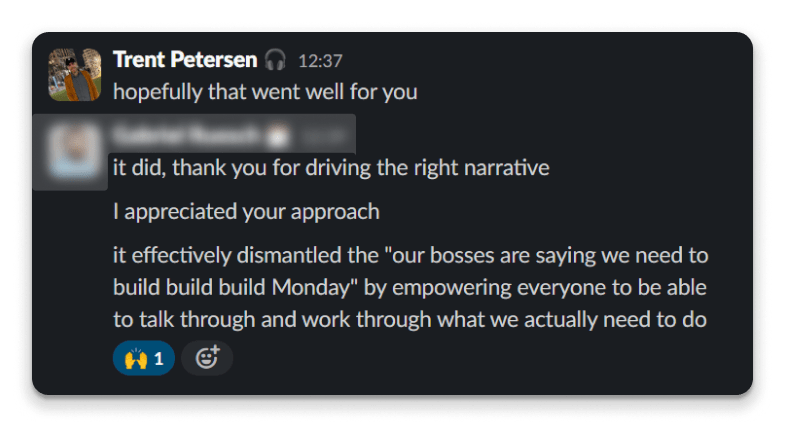My Leadership Philosophy
I design teams, strategies, and products that thrive in complexity.
My approach to leadership is not just about managing projects; it's about building an environment where people can do their best work. I believe the team is the primary product, and a healthy, empowered team is the only way to build great, user-loved products.
My Core Principles
I Lead with Deep Curiosity
I believe the most powerful questions are "Why?" and "What else?" I foster a culture on my teams where every designer is empowered to challenge assumptions and dig deeper than the surface-level request.
This relentless curiosity is the engine of true, user-centered innovation and creativity. It's not about being difficult or contrarian; it's about ensuring we're solving the right problem for the right reasons.
I Bring Clarity from Ambiguity
My role is often to be the translator. I dive deep into the technical, business, and user details, and then synthesize that complexity into simple, powerful strategies that everyone can understand and rally behind.
A clear vision is the most valuable asset a team can have. When everyone understands the "why" and the direction, they can move faster, make better decisions independently, and feel ownership over the work.

I Build Bridges, Not Silos
Great products are not built by designers alone. I build strong, trust-based partnerships with my counterparts in engineering and product. I believe my job is to ensure design is not a service, but a strategic, "group project" partner that helps the entire organization win.
The whole is always greater than the sum of its parts. When we break down the walls between disciplines and work as one team, we create better products and have more fun doing it.
How I Put This Into Practice
How I Hire
I hire for curiosity, craft, and collaboration. I look for people who are passionate about why they are building, not just what they are building, and who value working with others to find the best solution.
During interviews, I'm asking: Do they ask good questions? Do they care about the people they work with? Are they willing to challenge themselves and others respectfully?
How I Mentor
I mentor by empowering designers with autonomy. I create clear career paths, provide the resources they need to succeed, and foster a culture of creative challenge and support.
My role is to remove obstacles, provide feedback, and help them grow—not to be the final arbiter of every decision. When designers feel trusted, they do their best work.
How I Partner
I partner with Product and Engineering by building a shared vision. I use data-driven, "no ego" workshops and clear communication to align teams around a common goal, celebrating our shared wins.
I'm not interested in "design winning" or "engineering winning." I'm interested in the product—and the team—winning together.

See This Philosophy in Action
These aren't just ideas; this is the practical approach I've used to deliver results.
You can see it in my Building an AI-Empowered Design Team project, where we built a bridge with engineering to turn a C-suite crisis into a new, 50% faster workflow.
You can see this approach in the 2.3 → 4.7+ App Store Turnaround, where we built a high-performing design team from scratch and transformed the company's "offline-first" culture into a digital-first organization.
You can see my commitment to curiosity and hands-on leadership in my Self-Driven Explorations in Spatial Computing & AR, where I not only theorized about the future but built functional prototypes to test my ideas.
About Me
When I'm not untangling complex product ecosystems, you can find me adventuring with my kids and exploring the various permutations of technology, humanity, and nature—AR/VR, 3D printing, video games, design, art, science, concerts, beaches, waves, and sand.
I work in design because it allows me to apply many different skills to craft something that solves problems in new ways. I find deep value in building and leaving something better than I found it.
That applies to products, to teams, and to the people I work with. If I can help someone do better work, feel more empowered, or see new possibilities, then I've succeeded.
That's what leadership means to me.
